Guided Meditation For A Calm Mind

Chapter 1: Time to Take Control
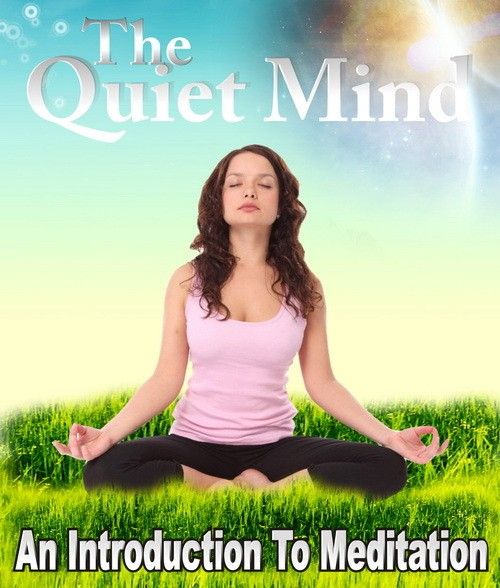
Do you ever get the feeling like you’re constantly putting out fires?
Like life is one massive struggle to stay afloat?
Do you come home from work feeling tired and stressed and without the energy to do anything other than collapse in front of the TV?
Do you always feel like you’re just not quite as happy as you think you could be/should be?
That’s life my friend. Or at least it’s life as many of us have come to know it.
In fact though, there’s no reason that this should necessarily be the case.
The problem is that we’re always chasing after the gold at the end of the rainbow and in doing so, we never stop to smell the roses.
Sorry to mix metaphors there but I feel it paints a fairly accurate picture of the situation.
We’re never happy because we’re always striving for what’s next.
We’re always stressed about what’s coming up and we never appreciate what we have until we lose it.
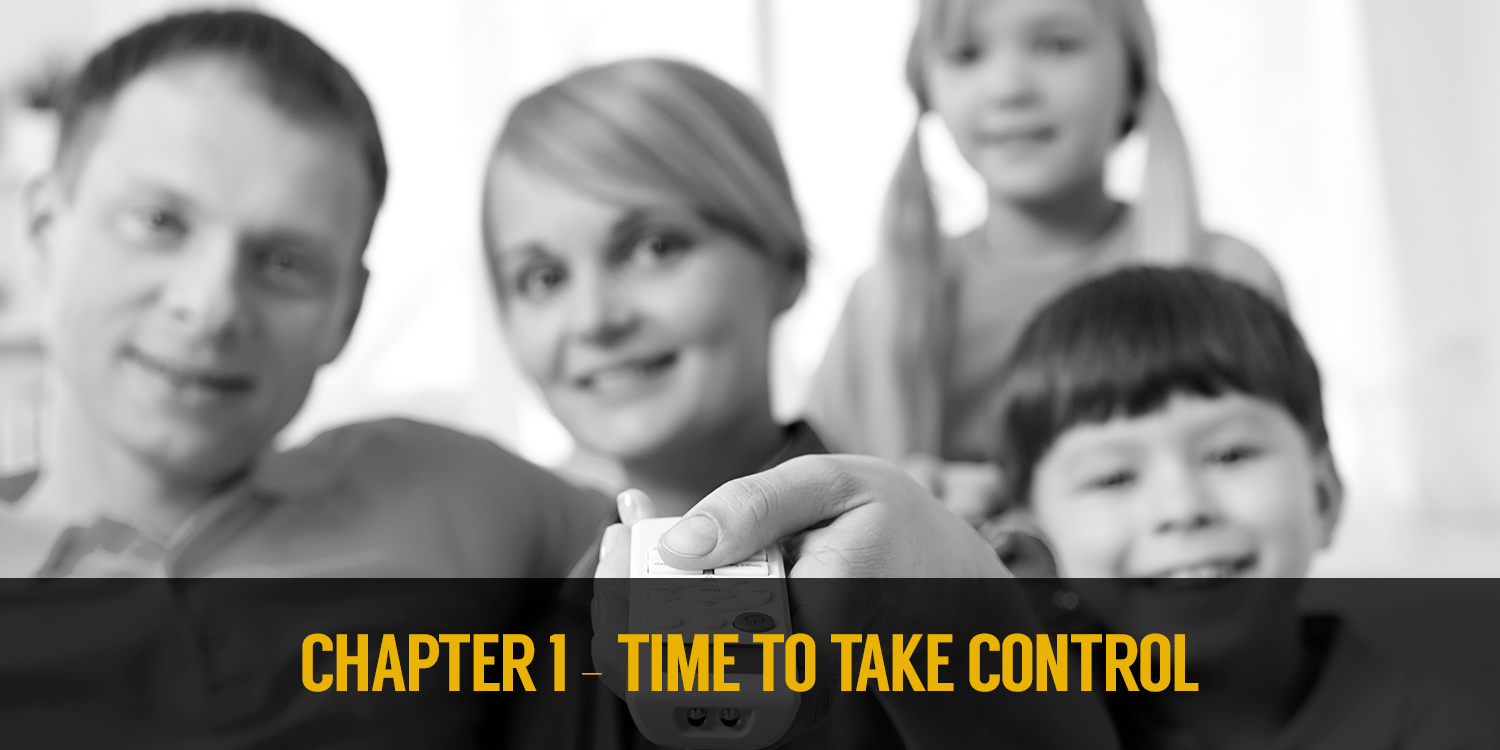
We think that the only way to change this is to change our lives. To work harder and longer but it’s not. The way we change this is from the inside out and we need to change the way we think about our situation and we need to change the way we approach life’s problems and the way we enjoy the moment.
And that means taking control of our minds and once you can do that, you can take back control and you can feel confident, relaxed and happy in the exact same circumstances. Once you can do that, you can start creating the space to plot a course and to start changing life for the better. You can stop treading water and start swimming.
All very abstract, yes. So far it sounds like a platitude from a bumper sticker.
But stick with me, because this is where the science comes in. And it might just change the way you think about your life, your brain and the interplay between the two.
It’s Your Perception That Matters
Think about it this way: it’s not the situation that matters, it’s your perception of the situation that matters.
And I mean this in the most literal and realistic of senses.
Think about it this way: you can be surrounded by fire and be completely calm and happy, or you can be relaxing at home and be completely stressed.
In the first case scenario, you’re surrounded by fire, but you believe that you’re invincible. As far as you’re concerned, nothing can hurt you and you have nothing to fear. As a result, you remain calm and your heart rate doesn’t even rise (well, other than from the effects of the heat!).
In the second scenario, you’re sitting at home, comfortable and with a warm cup of tea. You’re surrounded by family who love you and you have the TV on showing your favourite TV program. But all you can think about is the work you have to do tomorrow, your money problems and the fact that you’re not as well off as successful as you’d like to be.
As a result, your body and brain interpret the signals as you being in danger. Your brain produces more norepinephrine, more cortisol, more dopamine and more adrenaline. As a result, the person who is surrounded by flames but deluded is actually happier and calmer than the person who is sat at home but stressing out.
Now of course I’m not saying that you should be like the deluded guy surrounded by fire… That’s dangerous!
But you also really shouldn’t be like the stressed guy who should be relaxed. And here’s the thing: lots of us are!
THIS is why it’s so important to start taking control of your mind. Because it’s what will impact on your happiness, your calm, your focus and on all the other things that contribute to you being happy and successful.
Changing your environment and circumstances is often incredibly difficult – nigh impossible even – but you can change your mind today that can bring incredible benefits.
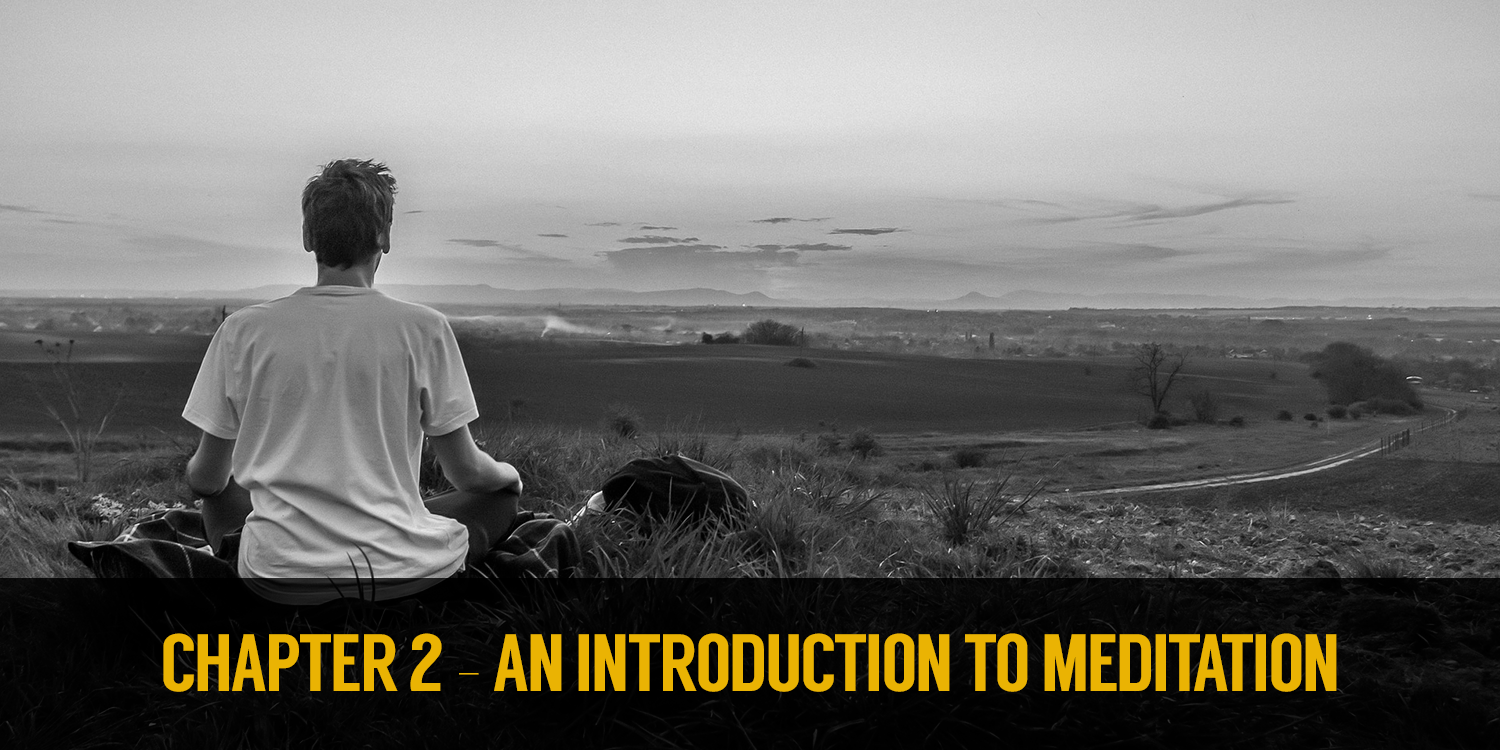
Chapter 2: Just What is Meditation
When we think of taking control of our minds and finding calm in a busy and hectic world, many of us will instantly think of meditation.
Meditation is an ancient practice that is used by billions of people around the world and that has been practiced for centuries. Now scientists and researchers are starting to decode it’s many benefits but nevertheless, it’s still very understood by a great number of people.
Let’s take a closer look at meditation, how it can help us and how you should get started.
Just What is Meditation?
Perhaps a good place to start is to answer the question: what is meditation?
While many people think of meditation as a way to 'achieve enlightenment', to recreate the effects of hallucinogenic drugs, or to practice various religions; the reality is that meditation is simply a form of practicing control over your thoughts. It can be all those things, but at its most basic, meditation means try to focus your thoughts or clear your mind, which is essentially the equivalent of training your attention.
So often our thoughts are reactive. We are constantly being distracted and taken from one experience to the next – whether due to television, to music or to something else entirely. But when you meditate, you will be actively controlling your thoughts. You will become introspective and you will start to reflect on the very nature of thought itself. And as you do, you’ll learn to remain in control of your thought processes so as to prevent yourself from becoming easily distracted, stressed, angry or otherwise experiencing inappropriate or unhelpful emotions.
This is a highly valuable form of training and one that's particularly relevant in today's fast-paced and constantly-connected world. Meditation can help us to conquer stress, to improve concentration in a range of tasks.
The Varied Benefits of Meditation
Studies show that meditation can help us to improve our mood, our concentration, our focus, our creativity and more. It has both immediate benefits by providing us with a break from the stress of our internal monolog and helping us to experience ‘theta brainwaves’ but it also has long term benefits as we start to learn to better control and understand our own thoughts and emotions.
Meditation has even been shown to boost our IQ! That’s right, it can actually make you smarter. And this also correlates with more connective tissue in the brain and a greater ability to utilize different areas of the brain at once for single tasks.
Fortunately, meditation is gradually starting to make its way into the mainstream. More and more 'productivity' and 'lifestyle' coaches are recommending its benefits and it forms an integral part of Cognitive Behavioural Therapy – which is currently the most popular form of clinical intervention for a whole host of psychological difficulties.
Still not convinced? Then I invite you to have a listen to Tim Ferriss’ podcasts. Tim Ferriss is the author of The Four Hour Workweek and is one of the most influential writers on the net when it comes to topics like fitness, self-improvement, productivity and happiness.
His most recent project – the podcast – sees him interviewing a large number of different influential figures. Those include Matt Mullenweg (creator of WordPress), Maria Popova (of Brain Pickings), Arnold Schwarzenegger and many, many more.
One of the questions he’ll often ask them is what their morning routine looks like and if they have any other habits they consider important to their success.
What does Tim Ferriss note is the one thing that nearly all his interviewees have in common? They all meditate. So if you want to be one of the world’s most influential entrepreneurs, if you want to be spiritually enlightened or if you just want to be smarter then you need to start meditating!
But while meditation has benefits across the board, it's worth noting that some forms of meditation appear to be more effective at promoting specific physiological benefits than others (according to a study from the National University of Singapore). If you want to get the best benefits from meditation, then you need to choose the right type to get started with.
Here's what the study found when comparing Theravada and Vajrayana meditation.
Theravada Meditation
In the study from the National University of Singapore, it was found that Theravada meditation is more effective than Vajrayana (below) for promoting relaxation and calmness. Studies measured activity of the parasympathetic nervous system – the prime purpose of which is to promote calmness – while practitioners were deep in meditation.
Vajrayana Meditation
Those using Vajrayana meanwhile were found to activate their sympathetic nervous systems, which control the fight-or-flight response. In short, this would lead to elevated heartrate, focus and arousal. This is a particularly interesting finding, as conventionally we view meditation as a means to calm ourselves and to relax.
After the participants had engaged in their meditative practices, both groups were then asked to take cognitive tests and it was found that the Vajrayana group were able to boost their performance considerably from a single session. The same boost in cognitive performance was not seen in those using Vajrayana meditation.
This demonstrates the broadness of the term 'meditation' and shows that different types of meditation have different specific advantages. In this scenario, you might decide to use Vajrayana meditation to psych yourself up for a competition or to prepare for an interview, then use Theravada meditation to calm down afterwards or to chill out before bed.
An Introduction to the Different Types of Meditation
As you can see then, the type of meditation you use is a very important factor in determining the outcome. Likewise, you will likely find that some forms of meditation are more accessible and enjoyable than others, depending on your own goals, your experience and your interests.
The question then becomes: where to start?
Read on and we'll look at some different types of meditation and some different terms.
Bear in mind that you don't have to stick rigidly to any one of these and actually you can create your own 'kind' of meditation by just setting your own goals.
Nevertheless, any of these will provide you with a good starting point to do more of your own research and to start practicing the art of meditation.
Mindfulness:
Mindfulness, also called 'Vipassana', is a type of meditation that comes from Buddhism. It's also the form of meditation that's perhaps most widely used in the Western world today – a good example being its use within CBT (this is something we’re going to come to in much more detail in subsequent chapters).
Essentially, the goal in Mindfulness is to be 'aware' and to be 'present' of your own thoughts and to reflect on them. This form of meditation doesn't encourage you to try and empty your mind then, but rather the objective is simply to let your thoughts 'drift by' like clouds in the sky.
What this then allows you to do, is to become more aware of what thoughts you actually tend to have, thereby being better able to spot negative thought patterns etc. that might be causing problems. This type of meditation has also been shown to reduce anxiety, almost as effectively as anxiety-reducing drugs.
Perhaps the biggest advantage of mindfulness though, is that it's not as challenging as trying to completely empty your mind of thoughts and thus provides a great starting point for those interested in learning.
Zazen:
Zazen is a term that essentially means 'seated meditation' and is sometimes referred to by the modern Zen tradition as 'just sitting'. This is an incredibly minimalist sort of meditation, which once again makes it ideal for those interested in getting started by feeling a little anxious to give it a go.
The only instruction here is to sit with the correct posture, meaning that there's no pressure to get anything 'right'. The simple act of sitting completely still is almost sure to result in a calming effect and to gradually clear your mind, thus there is no need for complex instruction beyond 'just sitting'.
While this is the core principle behind Zazen, it will sometimes be more complex than that. Often practitioners are given a paradoxical sentence, a story, a question or an element of Buddhist scripture to 'muse on'.
This method of meditation has also been adopted by a number of other religions – whereby believers are asked to think about lines from their respective religious scripts, or to think over scenes from their literature.
For some, the lack of guidance is going to make this an approachable and enjoyable form of meditation, for others it can be frustrating and might leave you lost.
Spiritual Meditation:
Another way in which meditation has been adopted by religions is through spiritual meditation. This is essentially a form of meditative prayer – and prayer has been shown to have many similar benefits to other forms of meditation.
Transcendental Meditation:
Transcendental meditation comes from Vedanta, which is the meditative tradition from Hinduism. TM is once again seated (ideally in lotus or half-lotus position) and this time uses a mantra. A mantra is any word or sound of your choice, which is simply repeated over and over again.
The idea behind this form of meditation is simply to 'rise above' any distractions or thoughts, effectively clearing your mind of all thoughts and living entirely in the moment. Alternatively, you can try focussing on your breathing in order to calm your thoughts.
The ultimate objective of transcendental meditation is transcendence. This is the meditation that is used as a path to 'enlightenment' which is reportedly a feeling of 'oneness' with the universe and perfect contentment. In reality, it's likely that enlightenment is merely a brain state, achieved by relaxing areas of the brain and thus getting them to shut down.
This is something that takes years to master though and is highly elusive, if you use transcendental meditation with the sole objective of reaching this kind of state, you a likely to be disappointed.
That said though, if you can reach this state, the effect is something similar to being on drugs or having a stroke. It’s completely mind-bending but not damaging in the same way those other examples are.
You lose the ability to distinguish time and to distinguish your own body in physical space as those areas of your brain close down. If you want to have an ‘end goal’, then this is certainly something interesting to aim for.
When done correctly, transcendental meditation is ideal as a way to relax and to move your thoughts away from stress. It can be used to calm the heart rate and is a fantastic 'coping mechanism' if you suffer with anxiety.
It's also quite difficult though and many people give up after becoming frustrated at the inability to quiet their inner voice. The secret to success is to go easy on yourself and not to force it.
Focussed Meditation:
As with transcendental/mantra meditation, focussed meditation involves the practice of trying to completely clear your thoughts by focussing on something else. Mantra meditation is one form of focussed meditation, but you could alternatively try focussing on external stimuli (like the sound of a river, or a piece of meditative music), or even on something like a candle flame.
Guided Visualisation:
Guided visualisation is a form of meditation wherein the practitioner visualises a scenario or environment. The 'guided' part of this process involves listening to a recording, which often will describe the scene you are in. This kind of meditation is great for relaxing and for moving your thoughts away from the hustle and bustle of daily life, before you achieve the ability to block out your surroundings through other forms of meditation.
If you're feeling stressed and you want to immediately calm down, then guided visualisation is a useful tool. However, it doesn't require the same discipline as other forms of meditation and so is not likely to help develop your ability to focus or to calm yourself in the same way.
Movement Meditation:
In movement meditation, you relax your mind while focussing on your body and moving through a range of gentle movements. A great example of this is Tai Chi Chuan, which is a martial art practiced incredibly slowly involving a set of gentle movements. While it takes time to learn something like a Tai Chi set, you can practice movement meditation by using a dance routine (Solja Boy?) or even by just swaying gently from side-to-side.
Vipassana:
Vipassana is 'insight meditation' (Vipassana is Theravada meditation, Theravada being a branch of Buddhism). This is meditation which involves 'close attention to sensation' with the goal being to discover 'the nature of existence'. This form of meditation comes from Buddhism and was believed to be the type practiced by 'Buddha himself'.
To practice this form of meditation, you sit down and then focus on your abdomen and feel the way that the breathing moves your stomach. Likewise, be aware of the other sensations throughout your body, trying to remain focussed and calm simultaneously.
When interruptions come – such as sounds, other thoughts, or temperatures, you should 'note' those sensations and give them labels such as 'warmth' or 'thinking'. Vipassana is often practiced on retreats, where participants alternate between seated and walking meditation.
Vajrayana:
Vajrayana is another branch of Buddhism. Vajrayana meditation is a complicated and advanced form of meditation, which involves the goal of becoming 'buddha' like. There are various types of meditation within Vajrayana, such as Mahamudra.
This form of meditation involves attempts to empty the mind once again, this time by simply 'doing nothing' to the extent where you aren't even focussed on trying to meditate.
Both the Theravada and Vajrayana forms of meditation are advanced methods and require years of practice to perfect and an understanding of the surrounding beliefs and cultures. They are also only two examples of the many complex and varied forms of meditation that exist.
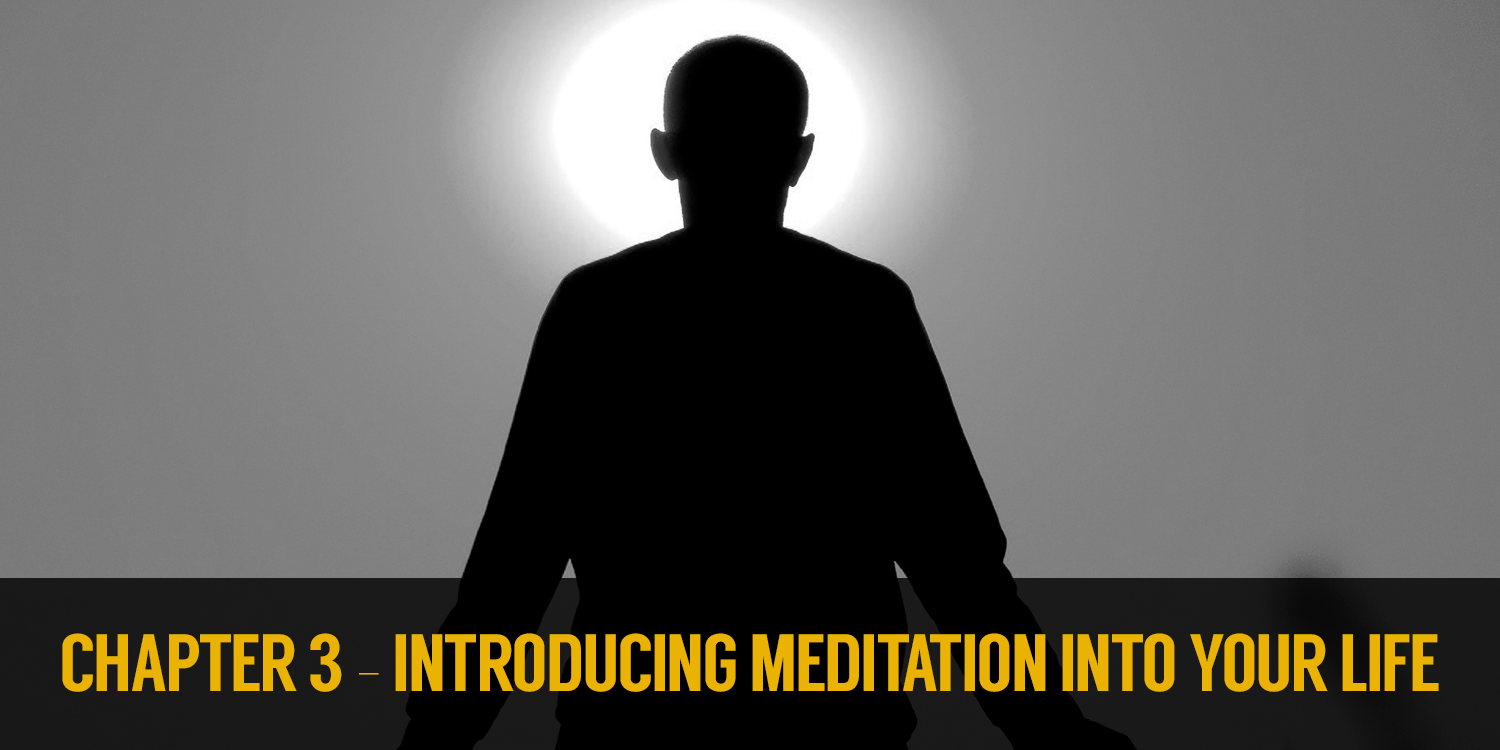
Chapter 3: Introducing Meditation Into Your Life
So that’s the general concept of meditation. The next question is: how do you start adopting it into your routine and making it a part of your life?
Because this is the part a lot of people will struggle with. In fact, there’s a better than average chance that you’ve already tried to get into the habit of meditating, only to find yourself giving up quickly because ‘nothing is happening’.
This time, we’re going to get it right.
A Simple Program to Get Started With
For most people, starting with mindfulness, Zazen or transcendental/mantra meditation is advised. These are perhaps the simplest methods you can use when you’re just learning and will help you to get a great start to your day every morning.
I also recommend approaching this using a process known as ‘kaizen’.
Kaizen essentially means ‘lots of small changes, that add up to offer big benefits’. The idea is that you don’t try and make massive, large-scale changes in your life, but instead make tiny changes and then gradually start building on those.
For instance, trying to go to the gym five times a week, for an hour at a time, is often an up-hill struggle and is something a lot of people will struggle to stick at.
Going for an extra 5 minute walk or doing some sit-ups every other day though? These are things you can much more likely stick with. And once you start doing that, it will be much easier to throw in some press ups, or to extend that walk to 10 minutes.
So this is the best way to start gradually introducing meditation into your regime: with very small and easy chunks of time.
Start with Zazen – sitting meditation. Take 5 minutes every morning to just sit and relax with your eyes closed. No goal, no stress and no trouble. You might find you can even do this while your partner is in the shower, or by waking up five minutes earlier. Almost all of us can find some time in the day for five minutes of quiet.
Aim to do this for 2 weeks with no other goal than to sit quietly every morning for that amount of time. Don’t expect anything to happen and don’t expect to ‘feel’ anything.
From there, you may want to progress to actually having a goal. You can aim to make this goal a better awareness of yourself (by using mindfulness) or you can aim to quiet your mind and learn to block out stressful thoughts (by using transcendental meditation).
I recommend aiming for both. Perhaps try increasing your time to 10 minutes and spending 5 minutes on mindfulness and 5 minutes on transcendental.
I personally find looking at a candle flame to be incredibly helpful when practicing transcendental meditation. However, it is entirely up to you how you do it.
Just know that even when you’re aiming to quiet your mind, you should never be ‘punitive’ and you should never punish yourself for not managing to achieve your goals. If you find that your thoughts are wondering or you’re being distracted, just notice that it has happened and let yourself be calm again.
The reason it is so important not to have a strict aim or to reprimand yourself for getting it wrong, is that this introduces stress to what should be an innately calming activity.
At this point though, you’re now starting to enjoy meditation as part of your everyday life and that means you should have formed the positive habit (remember, it takes 30 days to form or break a habit). Now you can see what works for you and start learning more/experimenting.
Using Tools and Getting Help
Still struggling to get into the swing of things?
Another option is to try guided meditation. Guided meditation means that you’ll be following a set of instructions that will be spoken verbally.
You can get these as a sound file or as a video and the idea is that you listen to them and follow the instructions in order to clear your mind/observe your thoughts.
Because this gives you something external to guide you, it makes it much easier not to let your mind wander. A great place to look for guided meditation is on YouTube – but you can also try the excellent ‘Headspace’ app.
Another option is to get help from someone who knows what they’re doing. An easy way to do this is to go to a class such as yoga or Tai Chi, where you will likely have some guided meditation at the end of sessions.
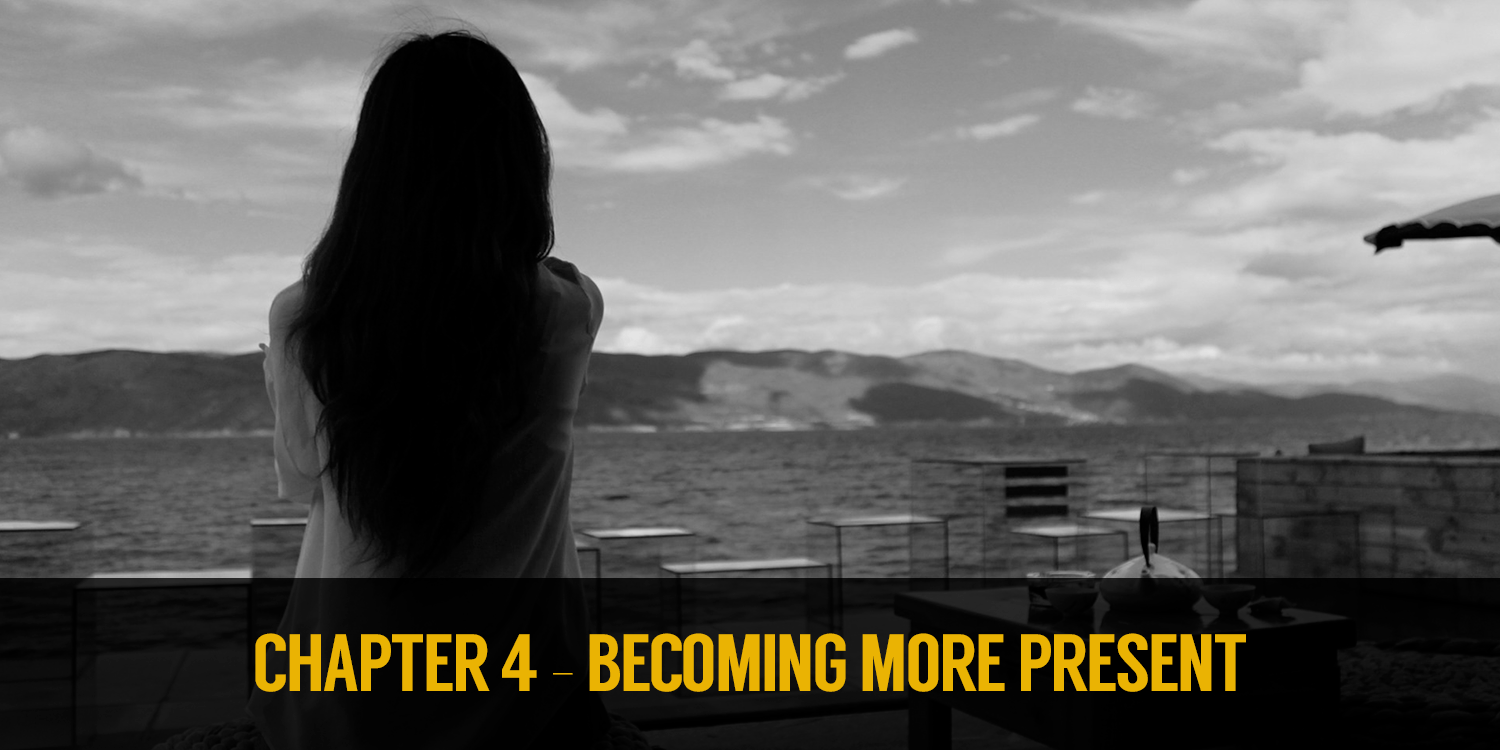
Chapter 4: Becoming More Present Meditation in Everything You Do
There is no ‘end goal’ in meditation but one vague aim is to get good enough at meditating that you can eventually clear your mind or detach from your thoughts at will.
This way, you can then prevent yourself from being distracted by unwanted thoughts whenever you want to be.
I like to call this ‘bubble time’. Bubble Time is the name for the small ‘segments’ of time I give myself throughout the day when I can be completely relaxed.
Imagine that you have a very stressful day and you’ve been working hard through a massive to-do list. You need to make lots of calls, manage your work team and just generally deal with a lot of fires. Plus you have a date tonight with someone that you think will be awkward and you have pressing, on-going money concerns. Sound familiar?
Anyway, you’re on the bus going from one meeting to the next and in that time there is no benefit to being stressed. In other words, you can carry on worrying about all those things you have to do if you want to… but it’s not going to do you any good. What would be far preferable, would be if you use this short amount of time as a break in order to recuperate.
Now if you’ve never practiced meditation, you’re going to struggle to do that.
But if you haven’t? Then you can put yourself in a meditative state and become indifferent to that stress. You can sit back and just clear your mind. Now, when you arrive at your meeting, you’re going to be much more recharged and energized because your brain has had the opportunity to get some rest. The result is that you’ll feel much better and you’ll work much more efficiently as well.
If you get really good at this, then you can eventually start to employ ‘moving meditation’ as in Tai Chi. Except now, you’re going to be in a meditative and relaxed, focussed state at the same time as walking, talking and doing other things.
You’ll be impervious to stress because you’ve learned to control your mind and control your emotions.
Because you aren’t giving your concerns the emotional weight that you may have done in the past, your brain isn’t activating the ‘salience network’ that it uses to respond to threats and you’re able to just carry on going about your business in a completely calm and efficient manner!
Being More Present
Meditation is one way to stop worrying about all those little nagging concerns and doubts. Another way though is just to become more present and more in the moment.
How can you do this? One method is to start focussing on your body and on your senses a little more.
The fact of the matter is that most of us are so in our own heads that we barely notice half of what’s going on around us. We walk in a dream state worrying about work, or about our relationships and we hardly take the time to stop and smell the roses – literally or metaphorically.
Try this right now. Turn off any music that you’re listening too and instead just start to notice the sounds around you.
Really listen!
What can you hear?
Perhaps the hum of traffic outside?
Maybe the murmur of conversation in the room?
Maybe you can hear next door?
Or perhaps you’re outside?
Maybe you can hear the sound of birds?
Likewise, you can probably smell a whole load of things you hadn’t noticed. And if you take the moment to feel your own body, then you can probably notice the sensation of the seat pushing into your legs and into your buttocks.
Maybe you can feel the blood filling your face and making you feel hot. Or perhaps there’s a cool wind blow against you. What direction is it heading?
Likewise, listen to the sounds of your own breathing and feel your abdomen expand and shrink as you do.
Once you do this, you’ll find that you stop worrying what’s going on around you and that you start to appreciate your environment a little more. There’s so much that you normally miss!
You can try doing this on walks too. Go for a walk with no music, no phone and nothing else and try just being present and noticing the world around you. It’s a calming and invigorating experience at the same time!
Being More Present in Conversation
Practicing this is important because as with practicing meditation, it will eventually become something that you can just engage at will.
Now you can choose when you want to start listening better to what people are saying to you and when you want to really focus on the day out you’re having with your children.
Again, you can leave your work concerns at home.
And try focussing on the sensations of your body more the next time you’re being intimate with a sexual partner. Don’t worry about your technique, what you’re going to do next, whether they like you… instead, really focus on how the touch of their hand feels on your body.
You’ll find that you instinctively know what to do next and that you start to be much more passionate and responsive. You’ll become a better lover, simply by getting out of your own head. And you’ll feel it far more forcefully.
This is true for everything else as well. Next time you have a bath, take a moment to really appreciate the warmth and the softness of the water against your skin. Indulge yourself in the smell!
The next time you eat cereal in the morning, remind yourself how much you enjoy that cereal and how happy you are to not be going to work.
This is what so many of us don’t do. So many of us are constantly in a dream state and worrying about other things that we actually miss what’s going on around us.
Being stressed and having no control over your mind is doubly problematic – because not only does it make us unhappy directly but it also distracts us from the things going on around us all the time that could be making us happier.
Oh and what this does for our relationships is also fantastic. Right now, being distracted by work could well be destroying your relationship with your family and friends.
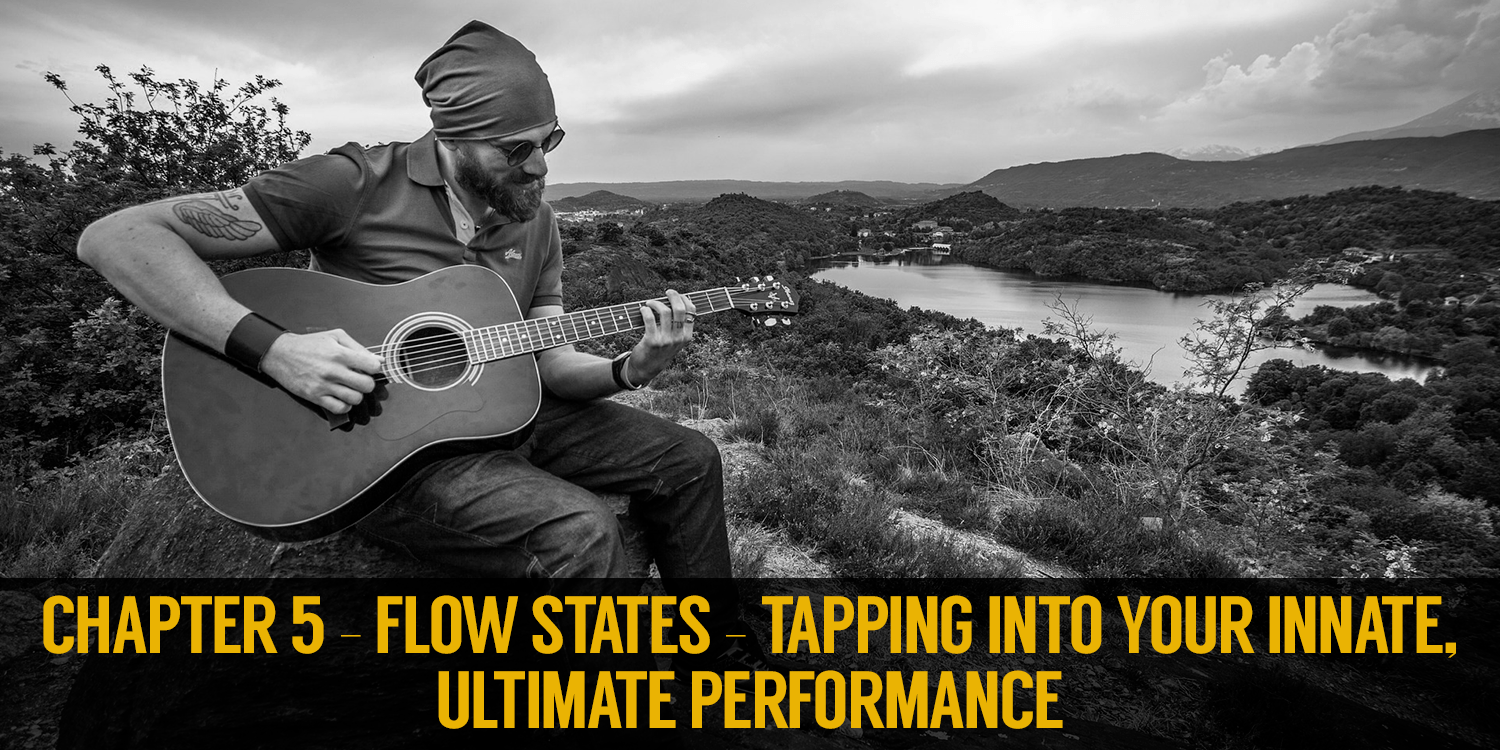
Chapter 5: Flow States – Tapping into Your Innate, Ultimate Performance
In the first half of this book, we’ve learned how to use meditation and how to start introducing it gently into our lives. Now you can focus at will, to stop feeling stressed and to actually control how you feel and what you want to think about.
This is an incredibly power because it means that you can choose to actually live in the moment, and you can choose what’s important to you and how you want to feel.
But what if I told you that this isn’t just about ‘happiness’?
What if I told you that this is also about getting the very most out of yourself?
What if I told you that the things you’ve just learned could help you to tap into your full potential and to become almost superhuman?
Do I have your attention?
Welcome to flow states.
How to Stop Being a Zombie
Remember what I just said about the importance of focussing on what’s going on around you? And on being awake, alive and in the moment?
This is how we’re supposed to function all the time. This is how animals and babies are all the time. Somewhere along the lines, we lose that connection with our environment.
The question you might now be wanting to ask is: why is it so hard then, to do the thing that we were designed to do? Why is it so hard to obtain the same focus and connection with the world that comes naturally to infants?
There are lots of answers to that question but one of the most pertinent is that we are too set into our routines and we aren’t stimulated enough.
Try that exercise again where you listen to your surroundings.
What can you hear?
Can you hear a ticking clock somewhere?
There’s a good chance that the answer is yes if you’re indoors but you might not have noticed it until I asked you to listen to it. And why not? Because you’ve become desensitized to it.
What’s happened is that your brain has heard that ticking before. It’s the exact same every second and it’s something you’re completely used to. As such, your brain says ‘this isn’t important’ and it pushes it into the background.
Meanwhile, the worries that are flooding through your mind constantly seem very important.
The same thing happens if you cut ping pong balls in half and place them on your eyes. When you do this, you’ll at first see the insides of those ping pong balls, as you would expect. But after a few minutes, things will go fuzzy.
Why? Because nothing is changing. The nerve endings in your eyes have become tired of the exact same stimulation and so they’re turning off. Nothing is moving, nothing is changing – it’s inefficient for them to keep firing.
This is called the ‘Ganzfield’ experiment and it’s quite interesting if you ever want to induce hallucinations naturally.
Now think about what you do in your daily life:
- You walk the same route to work
- You take the same ride on the same bus
- You have the same breakfast
- You have the same conversation with the same people
- You perform the same tasks throughout work
- You get home and sit in the same place
Guys… this is killing us. Our brain has a complete lack of stimulation and excitement from this kind of activity. We evolved to be constantly moving, constantly in danger, tracking our prey through the wild… and when that happened everything around us seemed important, dangerous and salient.
But now, we’re sleepwalking through life. Everything is safe and everything is the same…
If you want to be more present and more in-the-moment, then you need to submit yourself to environments and situations that are exciting, novel, different and interesting.
If you do this, then you’ll automatically forget all those things that are making you stressed. You’ll automatically become more engaged with the world and less worried about your own petty concerns.
So take different routes home from work.
Learn new skills and hobbies.
Have conversations with strangers.
Try new foods.
When you do, your brain will light up and come alive and you’ll get a reprieve from your money and relationship problems. Better yet, you’ll form new neural connections which will once again help you to become sharper, smarter, faster, more creative and more alive.
What is a Flow State?
If the idea of subjecting yourself to novel states – or ‘rich environments’ – sounds familiar, then you may have read Rise of Superman: Decoding the Science of Ultimate Human Performance by Steven Kotler.
In that book, Steven describes what is known as a ‘flow state’ in detail. This is the condition in which we are most alive, most happy and the best at performing.
It’s the exact opposite of wandering around and being stressed about work.
In a flow state, you are so engaged with the surroundings and what’s happening that you forget ‘yourself’ entirely. Sound familiar? It’s almost like a form of meditation, except this time you are completely switched onto the world around you.
This is something that most of us have experienced at some time in our lives and you may be familiar with it even if you think back.
Have you ever dropped something out of a cupboard and moved so fast to catch it that you didn’t even think?
Have you ever been playing sports, when suddenly the world seemed to slow down to a crawl and you were able to move with superhuman reflexes and break your personal record with some kind of superhuman feet?
Have you ever been writing and been so engaged with what you’re saying that you’re able to completely lose track of time?
Have you ever been in a conversation that lasted all night?
All these are examples of flow states. And in fact, even watching a film can sometimes mimic flow. In this scenario, you might become so engrossed in what’s happening on the screen, that you are shocked when you step outside and it’s dark. It’s almost like waking from a dream.
This is like ‘action meditation’ and it’s thought to be at the heart of most of our scientific breakthroughs, most record breaking athletic accomplishments and all kinds of other examples of people acting their very best.
Flow States and the Human Brain
So what’s going on inside that head of yours when you enter a flow state?
Essentially, a flow state is very similar to the ‘fight or flight’ response but with less ‘negativity’ you could say. It means that you think what is happening around you is very important and deserves all of your attention. As a result, your body starts to produce dopamine, norepinephrine, epinephrine, anandamide and other neurotransmitters.
This causes your brain to become intensely focussed, which creates the illusion that time has slowed down. You gain a kind of tunnel vision and now the only thing you’re focussed on is that one moment and the things you have to do to emerge from it victorious.
You begin to react almost automatically and instinctively with barely any input from your conscious mind.
And what this actually looks like in a brain scanner is called ‘temporo-hypofrontality’. To translate that into English, this means that for a brief period of time, the front portion of your brain (prefrontal cortex) has shut down.
This sounds like a bad thing until you realize that this is actually the part of your brain that’s responsible for doubt and that slows you down.
When you’re catching a ball, your body can do it perfectly every time. The problem is that you ‘get in your own way’.
By letting the front part of your mind shut down in that moment, you can tap into the incredible reflexes and focus of your body and act on pure instinct. You become an incredible machine, capable of inhuman performance.
You break records in sports, you produce incredible work and you come out of it feeling alive and invigorated.
In fact, it is said that many people actually ‘chase’ after these kinds of flow states – and that this explains a lot of thrill seeking behaviour.
Oh yeah and guess what temporo-hypofrontality also looks a lot like in a brain scan? You guessed it: meditation!
I highly recommend that you take up some kind of exciting hobby and that you start exploring more. Excite yourself and get yourself to focus and to pay attention!
The ‘Default Mode Network’
Flow states are currently all the rage and are getting a huge amount of attention in the psychological literature as well as online, in forums and in popular culture. Flow states are being touted as the solution for ‘everything’ and as something we should strive to always encourage.
But actually, this is somewhat missing the point.
Yes, sometimes we should be alert and connected. Sometimes we should be able to shut out the outside noise and to focus on calmness, stillness and oneness.
But actually, that chatter and stress is not something we want to entirely eradicate.
Sounds like I’m contradicting myself now right?
Stay with me!
Yes, when we were animalistic in our behaviour, we were much happier, much less stressed and much more engaged with the world around us. But you know what?
We were also animals.
We managed to achieve all those things that we achieved today by getting out of that reactive and engaged state and yes… stressing.
And not all stress is bad. ‘Eustress’ describes the kind of stress that motivates us to do things – things like perform our best at work, revise for exams, save money. Studies show that people who never feel stressed actually tend to perform worse in education and in their careers.
There’s more too. Did you know that being completely focussed is actually counterproductive to true creativity?
True creativity comes from letting the brain explore different neural connections – it is the act of recombining different ideas and memories into new formats and we tend to do this when daydreaming and when having an internal monologue.
When you do this, you enter what is called the ‘default mode network’. This is exactly the state of mind that you’re in when you are daydreaming and letting your thoughts run away with you. It tends to occur when you’re engaged in mindless tasks – like commuting – and it too is responsible for some incredible breakthroughs.
It’s part of legend now that Einstein came up with the theory of special relatively while working in a patent office – and it was the dull and mundane nature of working in that environment that allowed him to do so.
It might be nice to think that flow states and meditation are the answer to everything – but they’re not. They’re actually just a very important part of our mental experience that many of us have forgotten. Instead of trying to completely eliminate one type of brain state, true control of the mind means being able to switch from one brain state to another with ease.
In other words, it means being able to mull over tasks and agenda items when you’re a bit stressed or when you’re working. It means entering a productive flow state when you’re entering data, or when you’re doing martial arts or sports after work. And it means being able to switch off and let your brain have some much-needed peace and quiet when you get home from work.

Chapter 6: Shutting Out the Noise
So, the best type of mental state is the one that lets you switch to other mental states at will. Our aim is to be in control of our brains and our thoughts and to be able to switch from one state of mind to another with ease.
In other words? All types of thought and all types of mental state are important, valid and helpful.
Except one.
What is that one? It’s the one where you’re just incredibly distracted by all the constant demands being placed on you.
And this is where the ‘modern ache’ starts to come in.
Why We’re Wired and Tired
Earlier, we learned how we were desensitized to much of the natural stimuli coming into our minds through our senses. We take the same route to work and do the same things every day and as a result, we are very much desensitized to everything around us.
The problem is: our modern culture is all too aware of this and it tries to exploit it.
While you’re happily mulling over the day’s events you see, you’re also being distracted by:
- Bright billboards and adverts
- Your phone’s constant buzzing
- The TV
- The radio
- Your boss emailing your
- Cars honking their horns
- Alarms
- Computer games
All these things are designed to grab our attention and to over stimulate us so that they can get us to spend money/work/pay attention.
And this is what’s killing our ability to focus, relax and concentrate as much as anything else.
Do you know why alarms are designed the way they are?
They make a beeping noise because it’s something we would never hear in the wild.
As such, it’s strange and unusual to our brain and it sits up and takes notice – in comes that salience network and in comes that cortisol, norepinephrine and general stress.
And this is what wakes most of us up in the morning! We’re startled awake from complete, deep sleep by a loud ‘alien’ sound.
Then what do we do?
Normally, we will check our phones.
Bright light = even more cortisol (the stress hormone) being produced in our brains.
Then looking at adverts starts to grab our attention because that’s what they’re designed for.
Then we read our email. What’s this? A message from your boss asking if you can do something for them as soon as you get in?
Now you’re stressed and focussed on that. And thus, as you do your teeth it’s all you can think of.
Over breakfast with the family, your mind is half-watching the television and this is preventing you from properly paying attention to what they’re saying. The TV is much louder, much more colorful and is designed to grab attention.
What do we do on the way into work? Probably play a computer game. And those are all about making us pay attention. They stimulate stress by creating difficulty and when we do well, they reward us with the right sounds and colors. This creataes a dopamine hit in our brain which is very rewarding and which makes the activity very addicting.
All this time we’re missing the view out the window.
Then at work, we feel stressed again because we remember that email while we make coffee.
Coffee which – by the way – also triggers the release of more stress hormones.
Then we sit down and instead of doing the things we need to do first, we start our day by doing that thing that we were asked to do. Now we’re in a ‘reactive’ state of mind and we’re not able to do what’s most productive or most important for us.
And so it continues for the rest of the day. We’re constantly being tugged in every direction by computers, work, money problems, adverts, games, texts… and that’s using up all our ability to pay attention, to focus and to think.
So is it any wonder that you’re struggling to start meditating? Or that you’re so ‘wired and tired’ all the time? Or that you’re struggling to stay on top of things?
Using meditation will really help with this because it will give you the ability to control your focus and your ability to concentrate. Now you can say ‘no’ to worrying about that email. And you can say ‘no’ to focussing on the TV ads. And you can engage with your body and mind whenever you want in order to recharge and in order to start enjoying the world around you.
A Morning Ritual
What’s also really good though, is if you can try and reduce all that noise, distraction, stimulation and chatter. This will just make everything easier for you and will help you to better focus on the things that matter to you.
One example of how you can do this is with your ‘morning ritual’.
A morning ritual is basically a series of steps that you will endeavor to go through every single morning before you leave the house/start with work.
This lets you stop being reactive and start being proactive. It means that you’re now setting the pace and deciding how you want to begin your day – and it can help to make you more productive and efficient for the entire day that follows.
So what might a morning ritual look like?
Some great things to add:
- Read the morning paper – catch up on the news in a way that doesn’t require the TV!
- 10 minutes of mediation
- No phone/email/computer until you get to work
- Do some exercise – 10-20 minutes is better than nothing and a great way to give yourself a surge of energy
- Healthy breakfast
- Write a todo list – now you’re taking control of how you’re going to spend your morning/day instead
- Take a cold shower – it doesn’t have to be cold but if you have the willpower to try it, you’ll find it invigorates you, wakes you up and really helps you to focus and feel your own body
Similarly, you can also try introducing an evening routine. There are a few things this can help with:
- Write a journal – writing a journal is a great way to reflect on the day and how it could have been better/what you enjoyed about it
- No TV or phone for 30 minutes before bed – this will help to get your brain ready for sleep and will increase your production of the sleep hormone melatonin
- Read in bed – again, this helps you to feel sleepier and is also very meditative
- Have a warm bath – this can help relax the muscles for better sleep
- Lay out your clothes and/or gym kit for tomorrow
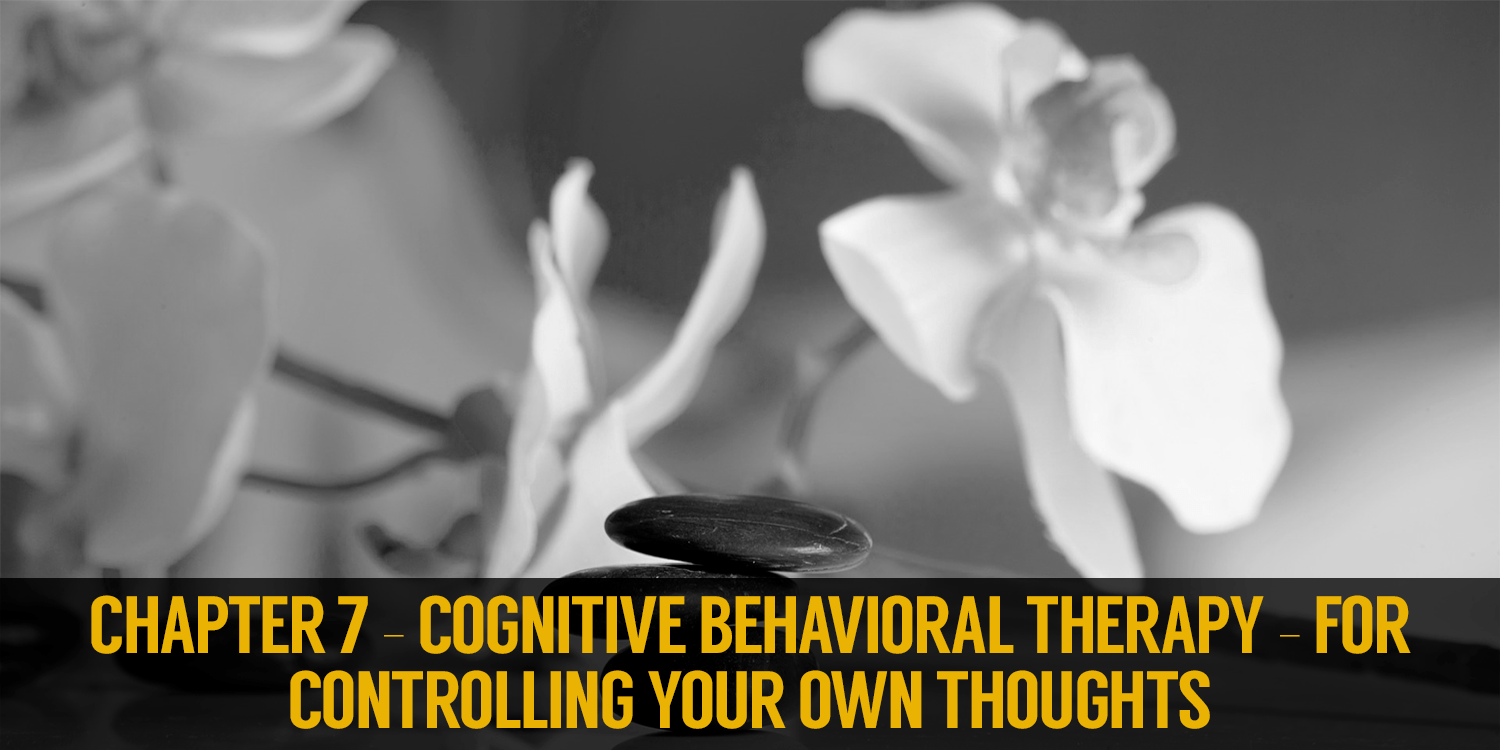
Chapter 7: Cognitive Behavioural Therapy – For Controlling Your Own Thoughts
Now you should be starting to get a better understanding of how your brain works, how all those distractions are negatively affecting it and how you can use meditation and ‘flow’ in order to start taking back control.
But you can go further with this and start engaging in whatever brain state you want at any given time. In order to do this, we’re going to be looking at something called ‘CBT’ or ‘Cognitive Behavioural Therapy’.
So exactly what is this?
What is CBT?
CBT is a psychotherapeutic technique. That is to say that it is a technique used by psychologists when they’re trying to treat patients with anxiety disorders or with mental illnesses. It is a framework that has become very popular and is now the preferred method of treatment on the UK’s NHS and in many other health institutions.
The reason for this is twofold:
- CBT is much more effective than older methods like ‘psychotherapy’ and has been demonstrated to work in a number of studies
- CBT is quick, non-invasive and cost effective. It can even be used ‘remotely’ simply by setting the patient homework to try and attempt on their own.
To understand what CBT is, it can be helpful to understand what cognitive psychology and behavioural psychology are individually.
Behavioural psychology is an old school of psychology that was big in the 50s. The central tenet here was that all our behaviour and thought processes were learned through repetition, association and observation.
The most famous example of behaviourism in action is the study ‘Pavlov’s dogs’. Here, Pavlov demonstrated that he could get a dog to salivate when it heard a bell, simply by ringing the bell every time it got fed. Eventually, this ‘classical conditioning’ taught the dog to associate the bell strongly with the experience of getting fed.
Behaviourism attempted to explain every single aspect of our psychology this way. For instance, we learn to walk by learning to associate certain sensations with falling and others with success. And we learn our personality through reward and punishment from others.
Phobias and other psychological problems were the result of unhelpful associations forming and these could be treating by creating new associations.
Over time though, behaviourism began to lose favour as it appeared to over-simplify matters. In a strict behaviourist view of psychology, there is no room for our thought processes or our internal experience. What happens when someone plans out an action? What happens when we imagine something happening?
What about intention?
Cognitive psychology added this element in and looked at the brain more like a computer with a ‘program’ running. The program is our thought process and we use this to decide what to do and how we’re going to do it.
CBT meanwhile elegantly combines both these approaches into one unified theory. We still learn through association, but this can just as easily occur in our own heads. In other words, if you’re convinced that you’re going to fall off a height, then you’ll keep rehearsing it happening in your mind and you’ll keep thinking to yourself that you’re going to fall. This alone is enough to create the association and to make us afraid of heights.
So, to treat a phobia, CBT will focus on reconditioning and creating new associations but it does this both physically and through changes to your internal monologue.
CBT Techniques Explained
So how might this work in practice? Generally, it involves several steps and several different techniques that combined allow you to control the way you think and feel.
The start, is to identify the way you feel and what you’re thinking when you’re doing something…
Mindfulness
And guess what… this is where mindfulness comes back in!
Say you’re afraid of public speaking and you want to try and get rid of that phobia forever. The first thing you would do is to be more mindful and to listen to your own thoughts and reflect on them. If you’ve been practicing, this should rob them of their power as you become detached and aloof from those thoughts.
But at the same time, you’re also going to make a note of them so you can try and change them…
Journaling
Another technique used for the same end is ‘journaling’. This involves writing down the feelings as they come to you or writing them in a journal at the end of the day. That evening routine is coming in handy at this point! See… it all comes together…
Cognitive Restructuring
The next steps all fall under the category of ‘cognitive restructuring’. You can think of this as ‘reprogramming’ yourself…
Thought Challenging
Thought challenging is simple: it means that you’re looking at those thoughts you made a note of and now you’re challenging them and testing whether or not you really think they’re true.
So if you’re afraid of public speaking, it may be that you think things like ‘I’m going to stutter and everyone will laugh at me!’.
In thought challenging, we’re going to deconstruct that belief and see if it really is likely/if it is anything to really be afraid of.
Ask yourself:
- Why would you stutter? Do you normally stutter when you talk?
- Why would people laugh at you? Are people usually that unkind?
- Would you laugh if someone had a hard time giving a speech? Or would you be more sympathetic and understanding than that?
- Does it matter? You aren’t going to see these people again… why does it matter what they think of you?
Ask yourself these things and focus on the fact that the worst-case scenario really isn’t all that bad. Once you can start doing that, you’ll see that there’s nothing to be afraid of. You can even repeat a maxim to yourself as a ‘positive affirmation’:
“It really doesn’t matter what these people think of me. It really doesn’t matter what these people think of me.”
Hypothesis Testing
This is one of the most unpleasant and upsetting treatments that are a part of CBT but it’s also by far one of the most immediately effective. The idea is that you’re looking at those fears you have and then you’re just going to test if they’re true.
So in other words, if you’re afraid of stuttering when you do public speaking, you’re now going to go up on that stage… and you’re going to not say anything. You might purposefully stutter. You might say the most awkward thing that comes to mind. You’re testing the theory that people will laugh.
And guess what? 9/10, you’ll find that your imagination was worse than the reality. Now people will just wait politely because that’s what people do. Either that or they will laugh… but it won’t really matter.
Exposure Therapy
Finally, exposure therapy is just like ‘reassociation’. This just means you’re going to face your fear repeatedly until that gets desensitized. In the case of public speaking, this might mean that you start attending classes to become a stand-up comic. Scary? Definitely. Effective? You bet.
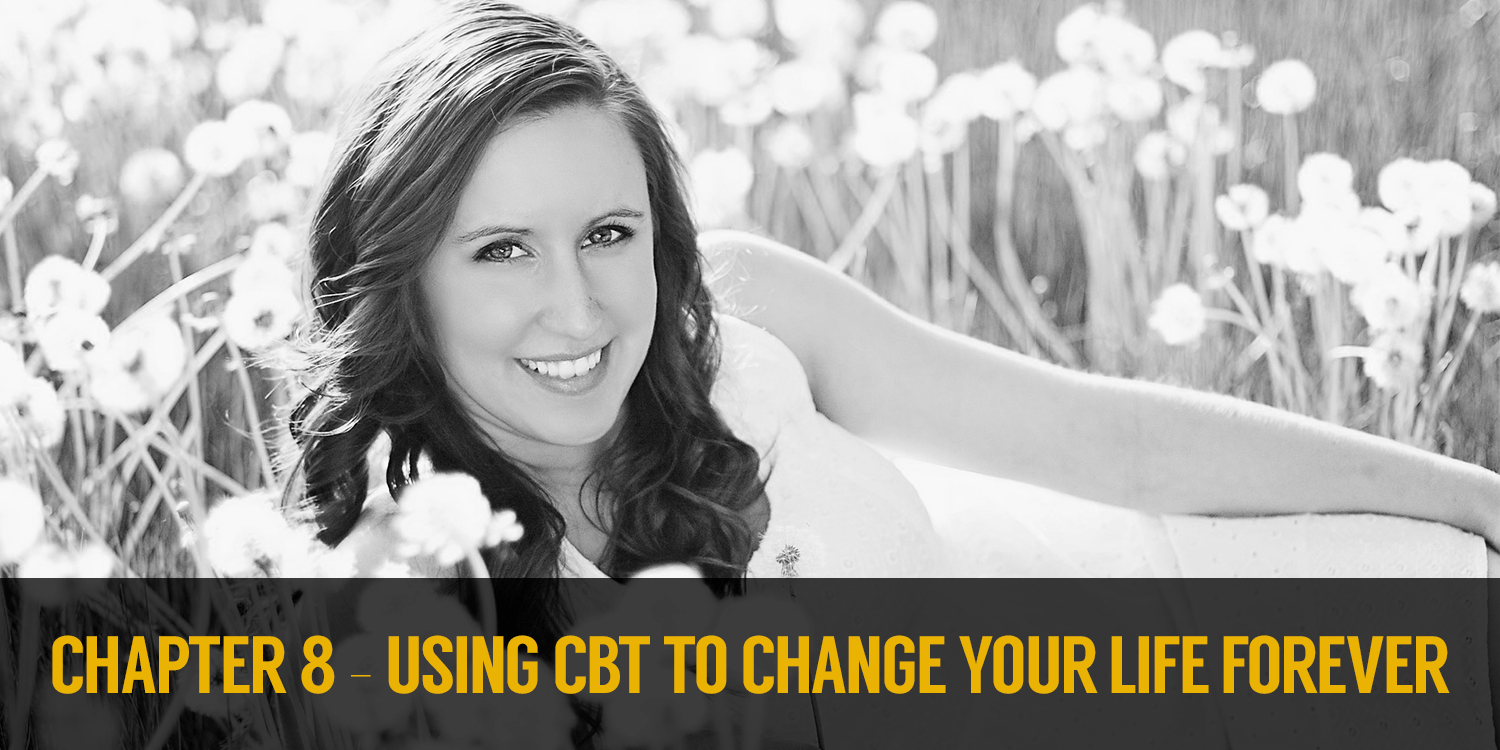
Chapter 8: Using CBT to Change Your Life Forever
The above techniques might sound quite simple but this is some of the most powerful stuff you will perhaps ever learn. This is all about being more aware of your own mind and once again, taking control of that in order to change the way you want to think and feel.
You can use CBT to overcome any phobia or any problem. If you’re afraid of heights, assess why and then start to address those fears and to reprogram the way you think about them.
Likewise, if you find that you’re not great at meeting women/men, you can likely practice in your mind and force yourself to face those fears.
But you can take CBT further too and impact on other areas of your life. Here are some good examples…
Sleep Soundly
If you’re someone who struggles to get to sleep, then you’ll know that this can end up impacting every other aspect of your life and leave you tired, stressed and even unhealthy.
The problem? The later it gets, the more stressed and anxious you become. The solution is to apply a little CBT. This time, the focus is going to be on identifying your thought processes and then seeing what would be more useful in that given moment.
The problem is trying to ‘force’ yourself to sleep. When you do this, you create stress and when you’re stressed, you can’t sleep.
Instead, try reminding yourself that it doesn’t matter if you get to sleep – as long as you’re resting. Resting is good for you no matter what, so just lie down and enjoy being comfy. Focus on it. You’ll be asleep in minutes.
Overcome Anxiety
CBT is incredibly effective for treating anxiety attacks. Somewhat ironically, one of the biggest dangers with panic attacks is that they make us stressed. Because we’re stressed about anxiety, this makes us become even more stressed and we work ourselves into a fluster that can end with fainting and hyperventilation.
The solution? You must just acknowledge it for what it is and allow it to pass. Say ‘this is a panic attack, I must let it run its course’ and then just allow it to happen. Go about your business as you normally would and don’t try and do anything about it.
You can also do something similar when trying to be less stressed generally – and especially when trying to calm yourself before an interview. Instead of worrying that you’re stressed, just remind yourself that stress can be useful. Now let yourself
Gratitude
Something else powerful you can use is to apply a ‘gratitude attitude’. This is like CBT, except in this case you’re not trying to combat a fear or stress. Instead, you’re simply going to change your focus again – and this time you’re focussing on what makes you happy and what you’re grateful for.
This is a great change because a lot of us are so caught up in everything that’s wrong, that we never think about how much is right.
Take a moment at the end of each day and write down the things you are grateful for.
- Your partner maybe?
- Your job?
- Your house?
- Your dog?
- The computer game you’re playing?
- There’s so much to be happy about but a lot of the time we miss it.
Take your new ability to change the way you think and focus on it. Suddenly everything becomes happier.
Entering Flow
Finally, how about using CBT to enter flow at will?
Remember what we said?
Flow is a natural response to what your body and mind deem a highly important stimulus. What defines the importance of a stimulus?
Your interpretation of it.
So remind yourself why this is important, tell yourself you need to concentrate.
MAKE yourself excited.
And engage!

Chapter 9: The Conclusion
And there you have it – with that you now know the most powerful and important tools available to you to take back control of your mind.
To recap:
- Practice meditation to learn to calm your mind and shut out concerns
- Learn to meditate on the move and to escape your stresses at will
- Try guided meditation if you struggle
- Make your environment and routine more interesting
- Take up sports and start entering flow
- Stop letting things distract you – have a morning routine
- Spend some time away from the phone
- Learn to use mindfulness to make notes of your thoughts
- Use CBT and cognitive restructuring to develop healthier responses to situations
- Practice gratitude
- Overcome your fears
- Enter flow and focus at will
Now you don’t need to change your environment, because you can change the way you want to feel about it.
Do you want to be stressed and angry?
Or happy and inspired?
It’s a choice!
And once you can do that, you can stop reacting to life and start controlling it. Now you can make life the way you want it to be.
It all just takes a little focus…
Resources
A Guide to Meditation for the Rest of Us
This is a very good guide to meditation from Lifehacker. Meditation can sometimes seem a bit daunting for those of us who aren’t already familiar with it but this article puts it all in layman’s terms so anyone can understand it.
This is a great site that provides a lot of information on CBT and which shows you how to apply it in your own life in order to combat anxiety and stress etc.
We mentioned Tim Ferriss in the book a couple of times. He introduced us to ‘fear setting’ and also interviewed many famous individuals who explain how they use meditation. You can see all that and more at his blog.
This is an in-depth post on flow states, what they are and how you can use them in your own life.
Tools
This is a list of tools from Tim Ferriss, many of which are very useful for getting on top of your daily concerns and improving your